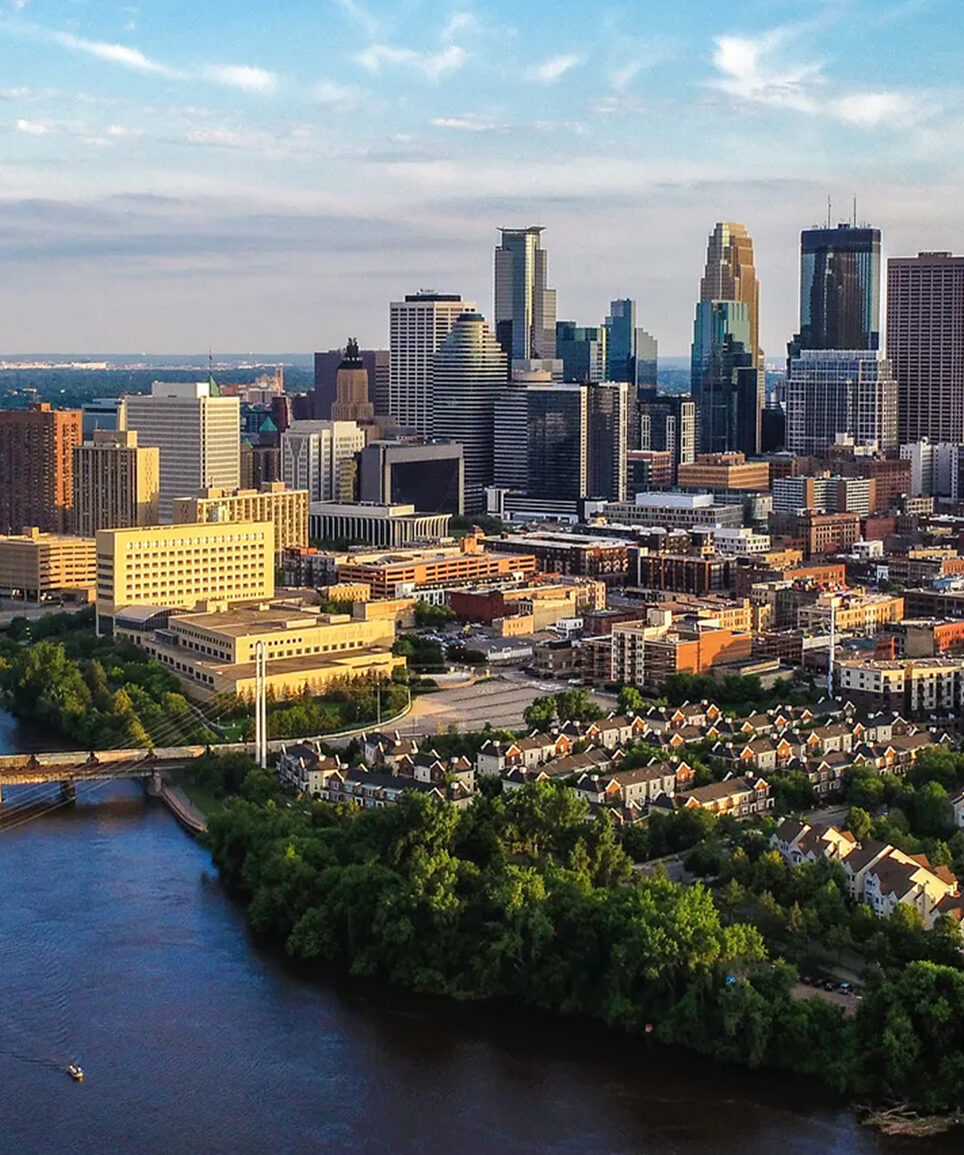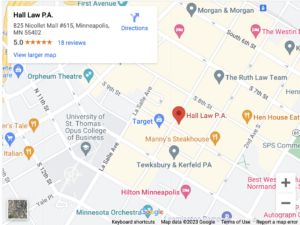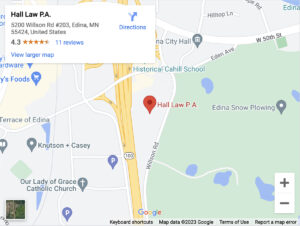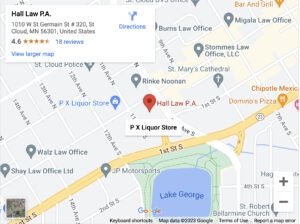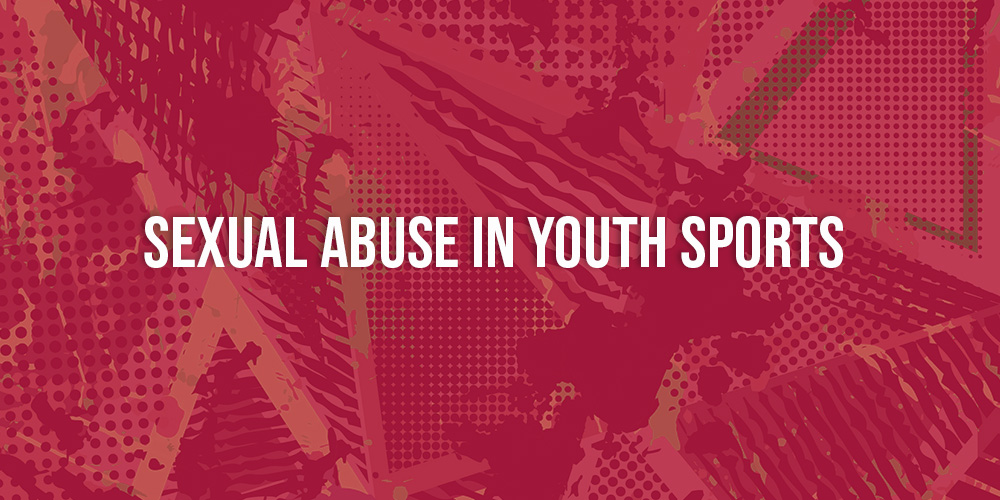
Outside of school and family, sports have a bigger impact on a child’s character and personality than perhaps any other factor. Young athletes look up to their coaches, often idolizing them and trusting them unconditionally. When this trust is betrayed by a coach, doctor, or trusted figure, children and their parents expect someone in authority to prevent it and hold the person accountable.
Yet, for decades, youth sports organizations, coaches, and trusted adults protected their own reputation and image over the safety of the young athletes – turning a blind eye to sexual abuse in their organizations. These institutions repeatedly failed to take action, perpetuating the crime of sexual abuse and the culture of secrecy across the nation’s most beloved sports, including gymnastics, cheerleading, figure skating, hockey, horseback riding, and tennis. Some of these national organizations such as USA Gymnastics even have congressional oversight.
In USA gymnastics, Michigan State University (MSU) failed to report instances of sexual abuse in the Larry Nassar case, leading to the victimization of hundreds of young girls. In cheerleading, two of the governing bodies, the U.S. All Star Federation (USASF) and USA Cheer, failed to ban coaches who had faced charges of sexual misconduct.
In both cases: Why were young girls and boys put at risk by the people who they trusted most, who were tasked with protecting them? Why was sexual abuse in sports accepted, allowed, and even normalized by those in positions of power?
How Prevalent Is Sexual Abuse in Youth Sports?
Sexual abuse is rampant in youth sports and also goes significantly underreported. It impacts an estimated 2 to 8 percent of all minor athletes and even more college athletes. More than 1 in 4 current or former student-athletes reported being sexually assaulted or harassed by someone in a position of power on campus, such as their coaches and trainers, and nearly half feared that their perpetrator would retaliate against them.
While data surrounding sexual abuse is still lacking, there are organizations and movements, such as the U.S. Center for SafeSport, designed to bring the issue to light. The U.S. Center for SafeSport is an independent agency with the mission of investigating and ending abuse in sports. It was established in March 2017 – during Larry Nassar’s trial – by the U.S. Olympic Committee.
In 2020, the U.S. Center for SafeSport surveyed 4,000 athletes in 50 sports. Their findings revealed:
- 93 percent of respondents who experienced sexual harassment or unwanted contact during their time in sports did not report it.
- Athletes who experienced sexual assault indicated that it most often occurred with their coaches, trainers, or another sports administrator (55 percent), or with an athlete peer (45 percent).
- Similarly, athletes who experienced inappropriate sexual contact (whether it was touching in a sexually inappropriate way or someone exposing themselves) also indicated that it most often occurred with their coaches, trainers, or another sports administrator (65 percent and 55 percent, respectively) or with an athlete peer (49 percent and 55 percent).
- Compared with other races and sexual orientations, African American athletes and bisexual athletes experienced nearly double the rates of inappropriate sexual touching.
The U.S Center for SafeSport also maintains a disciplinary database to keep the public informed when coaches or other individuals connected to the U.S. Olympic and Paralympic Movements are investigated or disciplined for violations of the SafeSport Code. The database is one of the few sources of information on this topic. While it includes a wide range of allegations, the vast majority of misconducts contained within involve either criminal disposition involving a minor or sexual misconduct.
Broken down by sport, soccer, gymnastics, and swimming are at the top of the list of entries in the database.
Allegations By Sport Affiliation – The Top 25
| Sport Affiliation | Count of Misconduct Allegations |
|---|---|
| U.S. Soccer | 292 |
| USA Gymnastics | 271 |
| USA Swimming | 198 |
| USA Hockey | 138 |
| USA Track & Field | 93 |
| U.S. Bowling Congress | 78 |
| USA Volleyball | 77 |
| USA Wrestling | 74 |
| USA Basketball | 54 |
| U.S. Equestrian Federation | 41 |
| U.S. Tennis Association | 40 |
| USA Taekwondo | 32 |
| USA Boxing | 28 |
| U.S. Figure Skating | 27 |
| USA Judo | 23 |
| USA Softball | 23 |
| USA Fencing | 18 |
| USA Water Polo | 15 |
| USA Cycling | 14 |
| USA Weightlifting | 11 |
| USA National Karate-do Federation | 10 |
| USA Diving | 9 |
| US Ski & Snowboard | 8 |
| USA Archery | 8 |
| USRowing | 7 |
Allegations By State
As may be expected, misconduct reports are highest in the higher population states such as California, Florida, Texas, and New York.
https://www.1point21interactive.com/maps/ag/m48jez82v8/Sexual-Abuse-In-Youth-Sports
The Ten States With the Most Misconduct Allegations
| Rank | State | Count of Allegations |
|---|---|---|
| 1 | California | 176 |
| 2 | Ohio | 117 |
| 3 | Florida | 101 |
| 4 | Texas | 91 |
| 5 | Illinois | 77 |
| 6 | New York | 71 |
| 7 | Minnesota | 63 |
| 8 | Pennsylvania | 63 |
| T-9 | Michigan | 51 |
| T-9 | Oregon | 51 |
It’s worth noting that the U.S. Center for SafeSport does not publish all misconduct allegations that they receive. Only those that present a potential risk to the general community and those where sanctions were imposed. As a result, nearly all 1652 allegations in the database are considered serious. In fact, 87 percent of them resulted in the perpetrator becoming ineligible or permanently ineligible.
Sexual Abuse in Gymnastics
According to the U.S Center for SafeSport database, gymnastics has had the second-highest number of misconduct allegations of any sport with 271 individuals. However, no investigation into youth sports sexual abuse can be complete without discussing Larry Nassar. For two decades, Larry Nassar, the former national gymnastics team doctor, abused more than 500 women and girls at every stage of his career, including when he worked at:
- The USA Gymnastics National Team Training Center at Karolyi Ranch in Texas
- John Geddert’s Twistars USA Gymnastics Club in Michigan
- Michigan State University
- Training camps, hotel rooms, the basement in his home
As far as we know, the first-known victim was in 1994 and the first allegation against Nassar was brought up in 1997. Yet, for 19 years, the allegations were downplayed, ignored, or completely disregarded.
Investigations were done but only to protect the institutions and their reputation. It wasn’t until 2016 when The Indianapolis Star exposed the sexual abuse and the first victim came forward publically that this could no longer remain in the shadows.
Timeline of Larry Nassar’s Abuse and the Organization’s Failure to Act
- In 1997, young gymnast Larissa Boyce and another teammate told MSU head coach, Kathie Klages, that they were uncomfortable with how Nassar had put his fingers inside of them. Klages, a close friend of Nasser, didn’t believe them and told them they had misunderstood the situation. Even worse, she relayed the complaint to Nassar himself but did not report it to the authorities. The abuse could have stopped there but instead, it continued for another two decades.
- In 1997, a parent complained to youth gymnastics coach John Geddert about Nasser’s medical treatments but Geddert did not investigate the allegations.
- In 1998, Nassar started abusing a friend’s six-year-old daughter, Kyle Stephens. The abuse continued for six years. When Stephens told her parents about it years later, they chose to believe Nassar over her.
- In 1999, an MSU cross country athlete told the athletic program staff that Nassar sexually assaulted her while treating her hamstring injury. Her complaint was dismissed.
- In 2000, MSU softball player Tiffany Thomas Lopez told university athletic trainers about Nassar’s sexually inappropriate behavior during her treatments and was made to feel like she is crazy to think it was anything but medical treatment.
- In April 2014, Amanda Thomashow filed a Title IX complaint against Nassar. MSU conducted an investigation but withheld key findings from Thomashow. There were two reports with two different conclusions. In Thomashow’s report, Nassar was cleared of all sexual misconduct.
- This prompted a criminal investigation by the MSU Police Department that ended when prosecutors did not charge Nassar. During the 16-month ongoing investigation, Nassar was permitted to see patients and continued to abuse them.
- In August 2016, The Indianapolis Star published a piece investigating sexual abuse inside USA Gymnastics. Rachael Denhollander filed a police complaint against Nassar with MSU police, contacted the paper to report her experience, and became the first person to publicly name Nassar as an abuser. She is one of 156 women who testified at Nassar’s sentencing.
- In September 2016, MSU fired Nassar.
- After the Nassar scandal was revealed, USA Gymnastics CEO Steve Penny waited almost five weeks to notify the FBI about allegations against Larry Nassar.
- In July 2017, Nassar pled guilty to possession of child pornography and was sentenced to 60 years in federal prison.
- In addition, in January 2018, Judge Rosemarie Aquilina sentenced Nassar to 40 to 175 years in Michigan state prison.
- A week later after Nassar’s sentencing, the entire board of USA Gymnastics resigned.
- In February 2018, Scott Blackmun stepped down as the chief of the U.S. Olympic Committee.
- In April 2018, Nassar’s medical license was permanently revoked by the Department of Licensing and Regulatory Affairs’ (LARA) Michigan Board of Osteopathic Medicine and Surgery.
- In May 2018, MSU agreed to a $500 million settlement for athletes who were abused by Nassar. Over 300 women came forward.
- In October 2018, USA Gymnastics CEO Steve Penny was arrested for tampering with evidence in the Larry Nassar case.
- In November 2018, the U.S. Olympic Committee moved to decertify USA Gymnastics as the sport’s governing body, almost a year after Nassar first plead guilty.
“This is what it looks like when the adults in authority do not respond properly to disclosures of sexual assault. This is what it looks like when institutions create a culture where a predator can flourish unafraid and unabated and this is what it looks like when people in authority refuse to listen, put friendships in front of the truth, fail to create or enforce proper policy and fail to hold enablers accountable.”– Rachel Denhollander in her victim statement
Perhaps as a direct result of the high-profile nature of the Larry Nassar case, misconduct allegations in the U.S. Center for SafeSport’s database have spiked since his sentencing.
While it is highly unlikely that abuse or misconduct has increased since the sentencing of Larry Nassar, it can be reasoned that the widespread coverage and awareness of both the issue as a whole and that abusers will actually face consequences has led to the increase in reports. However, according to the U.S. Center for SafeSport, information pre-dating the creation of the Center on March 3, 2017 was sourced by other governing bodies and organizations and cannot be considered accurate or complete.
Understanding Grooming in Youth Sports
According to the Rape, Abuse & Incest National Network (RAINN), grooming is using manipulative behaviors to gain access to a victim, coercing them to agree to the abuse, and reducing the risk of getting caught. When an abuser grooms a child, they are not only gaining the trust of the victim but also forming a reliable image and relationship with the victim’s parents and community. This person is able to use their position of authority or trust to gain access to a victim and abuse them without raising any suspicions about their intentions. Due to the power imbalance and influence that coaches and other individuals have over minors, grooming is rampant in youth sports.
While grooming a victim, abusers are cunning and find the path of least resistance. They do this by:
- Selecting victims that they have easy access to or that they perceive to be vulnerable
- Selecting positions or roles that allow them opportunities to be alone with a victim or to initiate it without appearing suspicious (like a coach, athletic trainer, medical trainer)
- Building a relationship of trust with the victim by giving them time and attention, making them feel special, important, and valued, providing them with advice and support, showing them understanding – when no one else seems to, taking them on fun trips or outings, making them believe they need this relationship
- Convincing the child it is important to keep the relationship a secret
- Isolating victims emotionally and physically from those protecting them
- Starting out by innocuously touching the victim (through hugging or tickling) – then introducing the idea of sexual contact and gradually increasing sexual contact (through showing pornography or discussing sexual topics)
Example: How Doctor Larry Nassar Groomed His Entire Community
“He was a typical serial pedophile: charming, powerful; he was able to pull the wall over all of the adults’ faces. What do you look for in a child sex abuser? The answer is the nice guy. It’s kind of easy for them because they find places where it is easy – a priest, an ultra-orthodox rabbi, a coach, a doctor for the gymnastics team.” – Marci Hamilton, Child Health and Safety Advocate in the documentary, “At the Heart of Gold: Inside the USA Gymnastics Scandal”
For decades, USA Gymnastics team doctor Larry Nassar was known as the “nice guy,” the trusted friend. Everyone saw the best in him. Everyone believed in him. Everyone raved about him. But no one ever suspected him of sexually abusing hundreds of young athletes in the name of medicine – and especially not when their parents were in the same room.
How did Nassar get away with this for so long? The answer is by having the entire community on his side. Nassar had groomed everyone – so much so that even if victims attempted to speak up about their abuse, they were immediately shut down by the institution, the adults around them, and their peers. The young athletes were told over and over again that what they were experiencing was a legitimate medical treatment. They were told over and over again that they can and should trust Nassar, and so they did – at the expense of themselves and their own bodies.
Sexual Abuse in Equestrian Sports
In the past, horseback riding was viewed as an elite sport. Top riders were given celebrity status, access to the best horses, and complete authority over the sport. Celebrated equestrian trainers controlled the fate of their riders and were free to pursue sexual relationships with minors within the equestrian world, without anyone as much as batting an eye. There was an unspoken rule to never talk about it – because talking came at a price.
For more than five decades, whispers of sexual misconduct surrounding George Morris swept through the horse stables but did not stand against the unrivaled stature of the legendary equestrian. Morris was known to have sexual relationships with the boys he would scout and train on the farm but his status as an equestrian kingmaker awarded him a certain level of discretion. No one dared to speak out publicly against Morris, afraid that it would cost them their equestrian careers and dreams.
In 2012, Jonathan Soresi was the first person to report Morris to the United States Equestrian Federation (USEF). Soresi was a student of Morris during the 1970s. But he recanted shortly after. At the time, he was high on drugs and also struggling with himself and the sense that he had been complicit in the abuse in some way. After he sobered up, he reported again – realizing “the transgressions of my past do not invalidate the reality of what happened to me.”
- In August 2019, George Morris was permanently banned from all domestic and international equestrian sports after accusations of sexual misconduct with a minor from 1968 to 1972.
- Since 2017, at least 22 equestrian trainers have been banned for life for misconduct by the U.S. Center for SafeSports or the USEF.
- In June 2019, equestrian trainer Robert Gage was barred for life over allegations of child sexual abuse – committing suicide weeks later.
Much like Morris, everyone was in awe of the now-deceased Flintridge Riding Club instructor Jimmy Williams. He sexually abused young girls from the mid-1950s to the early 1990s with no repercussions. Rumors and accounts of him touching and kissing young girls publicly were easily overshadowed by his fame, his charm, and his status as an equestrian legend. Many defended him, attributing his behavior to the social norms then, and not recognizing the true extent of the abuse.
There were 22 club presidents during Williams’s career – many of whom are no longer alive – and several of them considered Williams a close friend. Alan F. Balch, a president of the club during the 1980s and 1990s, remembered a former member calling on behalf of her daughter and another girl. He confronted Williams about the incident, who denied the accusations, and it ended there. In 2018, former students brought up allegations against him after he had passed.
Sexual Abuse in Cheerleading
In September 2020, a USA Today investigation exposed 180 individuals affiliated with cheerleading who had faced charges of sexual misconduct involving minors but were not banned by the sport’s two governing bodies, the U.S. All Star Federation (USASF) and USA Cheer. According to the report, more than 140 of the coaches, choreographers, and other individuals were convicted and 74 were registered as sex offenders.
With USASF, there was an appearance of oversight – but no real action. USASF delayed investigations of sexual misconduct allegations despite substantial evidence – failing to warn the cheer community and public of sexual predators. In fact, it did not even maintain a full-time staff to handle the hundreds of accusations and complaints that came in. Ginger Wilczak, a contractor, was the only caseworker brought in – and only on a part-time basis.
Some Examples
- Lenny Lewis Jr., who had been registered as a sex offender and fired from a gym in Washington in 2010, continued coaching – slipping by a gym in another state. Even after USASF received the records showing his conviction in 2017, no action was taken and Lewis continued coaching young cheerleaders until 2018.
- USASF took over a year to ban Washington gym owner Jeff Mendoza after receiving reports of sexual misconduct in 2018.
- In September 2020, celebrated Netflix docuseries “Cheer” star Jerry Harris was arrested and charged on multiple federal sexual misconduct charges, including soliciting child pornography. He used his celebrity status to prowl on young athletes. USASF did not suspend him until allegations against him spilled into the public.
Protecting Children: An Institutional Failure
As the above incidents indicate, sexual abuse in sports is not isolated to a few individuals – rather it is a failure on the institutional level that must be addressed.
Organizations such as USA Gymnastics and the U.S. Olympic Committee are entrusted to protect the athletes. Congressional oversight is expected to provide accountability and timely action, and yet, sexual misconduct allegations in every sport have been overlooked – regardless of Congressional oversight.
For-profit companies like USASF lack Congressional oversight and have a real incentive to shield the public from any known abuse. They often lack adequate safety policies and are afraid to face legal issues. They are also driven by profits and public image.
The common thread in all these cases is that the institutions’ brand and reputation supersedes the athletes’ safety. All investigations should protect the athletes – not the institution itself.
In 2017, an independent organization called U.S. Center for SafeSport was created with one goal: to build a safer culture within the world of sports and to prevent abuse. SafeSport instituted new prevention policies and reasonable procedures to limit one-one-interactions and electronic communications between coaches and minor athletes – intending to minimize opportunities of abuse. The organization has faced its share of controversy in how it has handled allegations, but many would view it as a step in the right direction, an attempt at change after years of inaction.
Recognizing and Addressing Child Sexual Abuse
What to Do Before:
The nonprofit Darkness to Light lists five steps to protecting children.
Learn the facts: Child abuse can impact anyone; one in ten children experiences sexual abuse before their 18th birthday.
Minimize opportunity: Think carefully about the safety of situations where adults or older youth have access to younger children – try to keep interactions with children in locations where they can be observed and supervised. Monitor children’s phone or internet use. Understand that abusers often gain the trust of family members and friends to spend alone time with the victim.
Talk about it: Talk to kids in an age-appropriate way about their bodies and boundaries.
Tell kids which parts of their bodies others should not touch, and if someone does, to tell their mom, dad, or another adult they trust. Tell kids that they don’t have to be afraid to talk to you even if that someone is a friend, a family member, teacher, coach, doctor, or anyone else.
E.g. “These parts of your body are special and it’s not appropriate for anyone to touch you there. When I say anyone, I really mean anyone. If anyone ever wants to keep a secret with you from mommy or daddy, then it is important to come to talk to mom and dad.”
Kidpower, an international nonprofit, teaches kids to take control of their own bodies, set personal boundaries, and that there are four rules around touch that involves play:
- It must be the choice of each person involved.
- It must be safe.
- It must be allowed by the adults in charge.
- It is never a secret.
Recognize the signs: Emotional or behavioral signs of abuse are more common than physical signs. They may include:
- Overly compliant behavior or an unhealthy need for perfection
- Behavioral problems such as physical aggression
- Anxiety, depression, fear, or withdrawal
- Sexual behavior or language that isn’t age-appropriate
- Lack of interest in friends, sports, or activities
Keep in mind that some children may not exhibit any obvious signs.
React responsibly: If a child tells you about their abuse, react calmly – not with anger or disbelief, and offer your support.
What to Do After Sexual Abuse Occurs
“What we really have to do is start listening to our kids. If I a child says they don’t like how someone touched them, you don’t say, ‘but that’s one of the nicest people I ever met.’ You sit down and say, ‘why? What was wrong?’” – Marci Hamilton, Child Health and Safety Advocate
If a child talks to you about grooming or sexual abuse:
- Listen to what they are saying with your full and undivided attention before giving your opinion or thoughts on the situation.
- Tell them you believe them.
- Tell them you know this must’ve been difficult for them but that they’ve done the right thing by confiding in you and you admire their courage.
- Tell them it’s not their fault.
- Tell them you are there to help and keep them safe, that they are not alone in this.
- Do not confront the alleged abuser.
- Seek the help of a professional who is trained to interview children about sexual abuse.
- Report the sexual abuse as soon as possible.
Resources
- Childhelp National Child Abuse Hotline: 1-800-4-A-CHILD (1-800-422-4453)
“If you are being hurt, know someone who might be hurting, or are afraid you might hurt another, call or text the Childhelp National Child Abuse Hotline.”
- Darkness to Light is an organization that focuses on empowering adults on how to prevent, recognize, and react responsibly to child sexual abuse. They provide resources on their website and virtual and in-person training.
- Prevent Child Abuse America is “the nation’s oldest and largest organization committed to preventing child abuse and neglect before it happens.”
- The Army of Survivors was formed by 40 survivors of sexual violence and is “the only national organization advocating for and supporting child athlete survivors of sexual violence.”
- Stop It Now “prevents the sexual abuse of children by mobilizing adults, families, and communities to take actions that protect children before they are harmed.”
Contact the Minnesota Sexual Abuse Law Firm of Hall Law Personal Injury Attorneys For Help Today
For more information, please contact an experienced sexual abuse lawyer at Hall Law Personal Injury Attorneys to schedule a free initial consultation today. We have three convenient locations in Minnesota, including Minneapolis, St. Cloud, and Edina.
We proudly serve Hennepin County, Stearns County, and its surrounding areas:
Hall Law Personal Injury Attorneys – Minneapolis
825 Nicollet Mall, Suite 615
Minneapolis, MN 55402
(800) 292-1979
Hall Law Personal Injury Attorneys – St. Cloud
1010 W St Germain St # 320
St Cloud, MN 56301
(320) 255-1000
Hall Law Personal Injury Attorneys – Edina
5200 Willson Rd #203
Edina, MN 55424
(952) 697-5560
